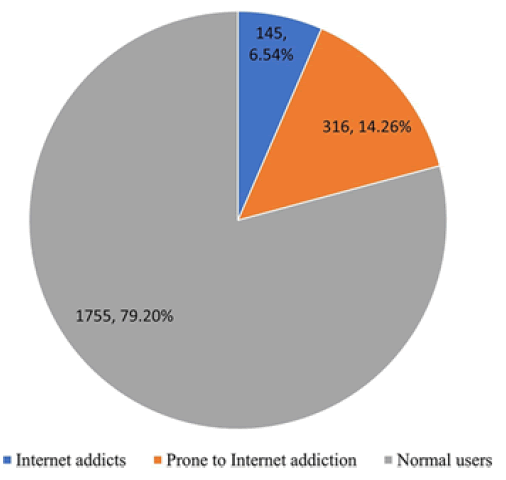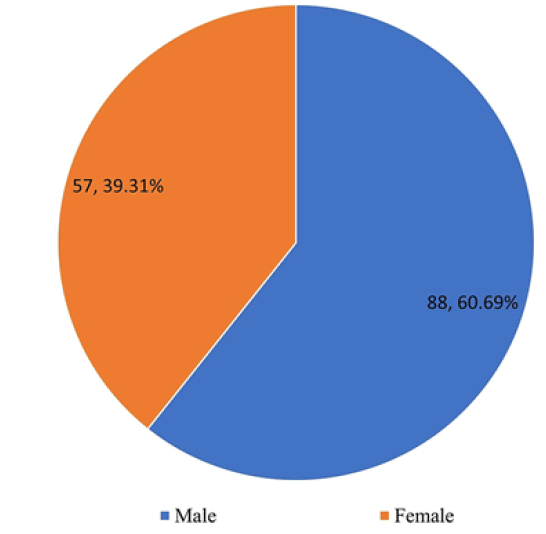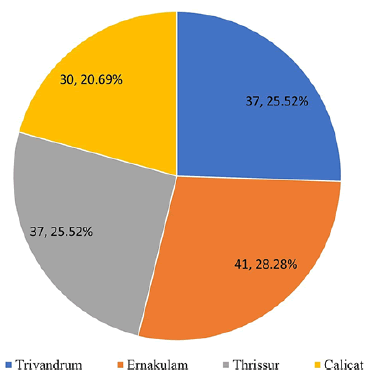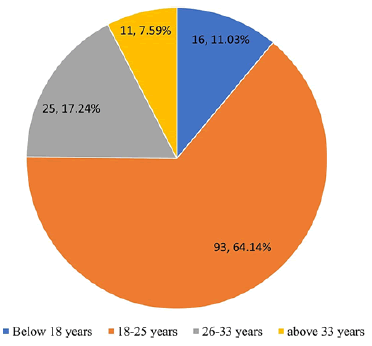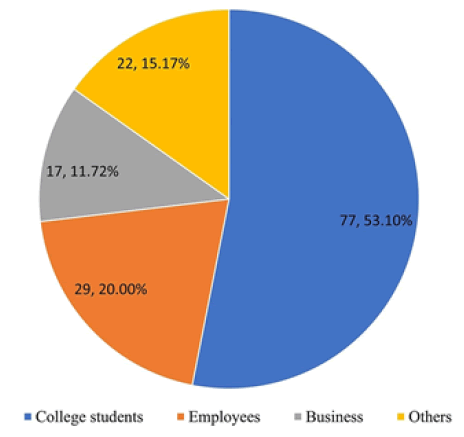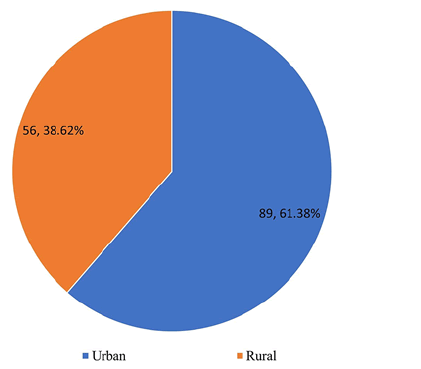Research Article - Clinical Investigation (2022) Volume 12, Issue 10
Psycho-social and Sexual Correlates of Internet Addiction Among Online Adolescent Users - A Cross Sectional Study
- Corresponding Author:
- Dr. Vivek Sanker
General Surgery,NIMS, Trivandrum,India
E-mail: viveksanker@gmail.com
Abstract
Keywords
Adolescent • Psychology
Introduction
Prevalence studies showed that many individuals of diverse backgrounds experienced problematic internet use across geographic locations [1,2]. Prevalence estimates of problematic internet use was consistently reported to be higher among college student populations than in studies of other populations, including younger adolescents and elementary-school students [3,4].
However, research on internet addiction is still in its infant stage of development which necessitates further research. Experimental approaches that are theoretically and methodologically sound needs to be developed to gain a deeper understanding of internet addiction in India. The present study showers light on the crucial aspects of internet addiction and provides a platform for future research in this area. The present area of research seeks more attention owing to the fact that college student population is the most vulnerable group to internet addiction. Moreover, not many studies have been done on internet addiction among college student populations especially in Indian scenario.
Materials and Methods
This was a descriptive cross-sectional study conducted among 2400 adolescents who visited internet cafes of four major cities in Kerala (Thiruvananthapuram, Ernakulam, Thrissur, and Calicut) using Stratified and systematic random sampling methods.
Among the various internet cafes, 80 internet cafes (20 cafes per city) were selected for the present research. Later the cafe staffs were given supervised training program for data collection. It included teaching the core concepts of internet addiction, the meaning of each item in the Internet Addiction Test (IAT) and Socio Demographic and Clinical Data Sheet. With the support of café staff members, every tenth individual who visited the internet café was selected randomly and a gross total of 30 participants were chosen from each café. The café staff members were instructed to collect the particulars of the online users regarding their socio demographic details and degree of internet addiction by employing IAT and Socio demographic data sheet.
Inclusion Criteria
1. Both male and female
2. Participants who gave consent
Exclusion Criteria
Participants exhibited mental disorder as per International Statistical- Classification of Diseases and Related Health Problems 11th Revision.
Tools
In the present investigation, with a view to obtain relevant data, IAT and Socio demographic data sheet were used. Socio demographic data sheet is meant for collecting basic information of the subject such as name, age, gender, religion, domicile, occupational status, applications utilized on internet, and major problems associated with internet use
The Internet Addiction Test developed by Kimberly S Young (1998) is the first validated instrument to assess internet addiction. It is a Likert type scale comprising of 20 items which assesses the severity of any negative consequences arising from excessive internet use. These items cover an individual’s internet use habits, his/her thoughts about the internet as well as the related problems of internet use. For each item, a graded response (0=“not at all” to 5=“always") can be selected and the higher summed item scores represent higher levels of internet addiction.
The participants were instructed to answer the 20- item questionnaire which was based upon the following five-point Likert scale. They were also informed to record the time spent online for nonacademic or non-job (or recreational) purposes. The scoring was done by adding up the responses given by the participants for each of the 20 questions. The minimum score was 0 and the maximum was 100; the higher the score, the greater the problems caused by internet use. Total scores that range from 0 to 40 points are considered to reflect a normal level of Internet usage; 40 to 69 are considered to be vulnerable to internet addiction; and scores of 70 to 100 are considered Internet addicts. Overall, the IAT provides a framework for assessment of specific situations or problems that have been caused by internet overuse.
Statistical Analysis
The collected data was statistically analyzed with the aid of Computer program Statistical Package for Social Sciences (SPSS). Chi-square tests were used to determine the association between sociodemographic characteristics and Internet addiction. Tables, percentages, mean, standard deviation, and charts were used to summarize descriptive statistics. Hierarchical regression was used to analyse variables predicting internet addiction. It assesses the relationship between one dependent variable and several independent variables by measuring how strongly each independent variable predicts the dependent variable. Here the dependent variable was the level of internet addiction, and the independent variables were occupational status, gender, domicile, and age.Ethics
The study was approved by the institute ethics committee. Each participant was explained the nature of the study. Informed consent of the participants was collected prior to the study and confidentiality of the session was maintained. The participants were allowed to withdraw as and when they desired (Figure 1).
Results
Prevalence of Internet addiction among online users in general populationAmong the 2216 respondents, 145 individuals were found to be internet addicts and the corresponding prevalence of internet addiction was 6.54 per cent. Hence the prevalence of internet addiction was found to be significant among the online adolescent users in the general population (Table 1).
TABLE 1: Prevalence of Internet addiction among online users in general population.
| Sample | No. of internet addicted individuals | Mean | SD | Prevalence of internet addiction |
|---|---|---|---|---|
| 2216 | 145 | 80.26 | 6.90 | 6.54% |
Regional difference in the prevalence of internet addiction
The number of internet addicts reported from various cities were as follows: Ernakulam 41 (28.3%), Trivandrum 37 (25.5%), Thrissur 37 (25.5%) and Calicut 30 (20.7%), with a chi square value (χ2) of 1.731, p=0.630. Here the p value obtained was greater than 0.05 which clearly indicated that the cities didn’t differ significantly with respect to internet addiction (Figure 2).
Gender difference in the prevalence of internet addiction:
Out of 145 participants who fulfilled the criteria for internet addiction, 88 (60.69%) were males and 57 (39.31%) were females with a χ2=6.63, p=0.01. The results obviously indicated that gender difference existed among internet addicted adolescents (Figure 3).
Age-wise difference in the prevalence of internet addiction:
The entire population was categorized into 4 age groups such as (i) below 18 years, (ii) 18 years to 25 years, (3) 26 years to 33 years and (iv) 34 years and above. Among the different age groups analyzed, the individuals who were in an age group of 18 years to 25 years were likely to report the most significant symptoms associated with internet use: 93 (64.10%) followed by individuals of 26 yearsto 33 years: 25 (17.20%) and below 18 years: 16 (11.03%). The participants belonging to the age group of 34 years and above represented only a small proportion 11 (7.60%), χ2=117.54, p=0.01 (Figure 4).
Occupational status-wise difference in the prevalence of internet addiction
Among the internet addicts identified, more than half of the total belonged to the college student category: 77 (53.1%). While the individuals who came under employees group represented only 1/5th of the total affected population occupied the second position: 29 (20%); whereas individuals who belonged to other group category (home makers, school students & unemployed) constituted 22 (15.2%). Individuals who belonged to the business category seemed to be the least affected group who represented only a small proportion 17 (11.72%) of the internet addicted category, χ2=63.08, p=0.01 (Figure 5).
Residence-wise difference in the prevalence of internet addiction
Out of a total population of 145 internet addicts, individuals hailing from the urban and rural areas were 89 (61.38%) and 56 (38.62%) respectively, χ2 =7.51, p=0.01. Thus, it was clearly specified that the level of internet addiction differed significantly with respect to place of residence (Figure 6).
Psycho-social and Sexual problems among internet addicts
The various problems frequently observed among the participants were time management, deprivation of sleep, poor academics, relationship problems, financial problems, and sexual problems. Time management was the most reported problem with 38 (26.2%) addicts citing difficulties in controlling their online use and failing at repeated attempts to cut down or curb use. Physical problems such as sleep deprivation and associated problems like back strain, and eye strain due to long hours sitting in front of the computer were reported as the second major problem by 32 (22.10%) participants. Poor academic performance was reported by 30 (20.70%) participants who were full-time students and had developed poor study habits, missed classes, or didn’t sleep enough to concentrate on school because of their online use.
Work problems such as reduced job productivity, neglecting attitude, and in extreme cases, job loss due to their online habit, were also reported by some of the participants who were working. Relationship problems were reported by 27 (18.60%) participants, citing problems such as arguments with family members or significant others like teachers and friends, reduced social interaction because of the amount of time they spent on the computer. Financial and sexual problems secondary to internet addiction were reported by 11 (7.60%) and 7 (4.80%) participants respectively. Thus, it can be concluded that the sample showed significant difference with respect to problems associated with internet use (p<0.05) (Table 2).
TABLE 2: Table showing Psycho-social and Sexual problems among internet addicts, Df - Degrees of freedom
| Problems | Observed frequency | Expected frequency | Chi – square | P |
|---|---|---|---|---|
| (Df=5) | ||||
| Sleep | 32 | 24.2 | 31.57 | 0.01 |
| Social interaction | 27 | 24.2 | ||
| Time management | 38 | 24.2 | ||
| Academics | 30 | 24.2 | ||
| Financial | 11 | 24.2 | ||
| Sexual | 7 | 24.2 | ||
| Total | 145 | 145 |
Preference to online activities among internet addicts: The chief online activities adopted by internet addicts include pornography, chat, game, and gambling. Among which the chat rooms were the most addicted cum problematic online application by majority of the respondents (N=64, 44.1%), followed by online pornography (N=47, 32.4%) and game (N=22, 15.2%). Gambling was reported to be the least utilized online activity (N=12, 8.3%) (p<0.05) (Table 3).
TABLE 3: Table showing preference to online activities among internet addicts, Df - Degrees of freedom
| Applications utilized | Observed frequency | Expected frequency | Chi–square | p |
|---|---|---|---|---|
| (Df=3) | ||||
| Pornography | 47 | 36.3 | 46.26 | 0.01 |
| Chat | 64 | 36.3 | ||
| Game | 22 | 36.3 | ||
| Gambling | 12 | 36.3 | ||
| Total | 145 | 145 |
Predictive factors of internet addiction
Hierarchical regression analysis for variables predicting internet addiction: Here the dependent variable was the level of internet addiction, and the independent variables were occupational status, gender, place of residence and age. The results showed that occupational status of the individual was the most predictive factor (b=-.481, p<0.001) of internet addiction and was significantly able to explain 30.9 per cent of the variance in internet addiction. However, when combined with other variables such as gender, age, and place of residence it could explain 55.6 per cent variance. The other predictive factors explored were gender (b=.252, p<0.001); place of residence (b=-.238, p<0.001) and age (b=-.199, p<0.01) respectively (Table 4).
TABLE 4: Summary of Hierarchical Regression Analysis for Variables Predicting Internet addiction, Note: p**<0.01 level, p***<0.001 level
| Predictors | B | S.E b | Beta | R2 | Adjusted R2 | ∆R2 | |
|---|---|---|---|---|---|---|---|
| 1 | (Constant) | 88.847 | 1.012 | 0.309 | 0.304 | 0.309 | |
| Occupational status | -3.482 | 0.436 | -.556*** | ||||
| 2 | (Constant) | 85.482 | 1.103 | 0.432 | 0.424 | ||
| Occupational status | -3.333 | 0.397 | -.532*** | 0.123 | |||
| Gender | 5.36 | 0.967 | .352*** | ||||
| 3 | (Constant) | 90.949 | 1.733 | 0.489 | |||
| Occupational status | -3.221 | 0.379 | -.514*** | 0.478 | 0.057 | ||
| Gender | 4.978 | 0.925 | .327*** | ||||
| age group | -2.471 | 0.623 | -.241*** | ||||
| 4 | (Constant) | 92.147 | 1.675 | 0.541 | 0.528 | 52 | |
| Occupational status | -3.041 | 0.364 | -.485*** | ||||
| Gender | 3.827 | 0.926 | .251*** | ||||
| age group | -2.108 | 0.6 | -.206** | ||||
| Residence | -3.734 | 0.938 | -.247*** | ||||
Discussion
Addiction, a neuropsychological disorder characterized by a persistent and intense urge to engage in certain behaviours, despite substantial negative consequences. This condition often alters brain function that perpetuates craving and weakens self-control. Thus, addiction is a disorder with complex variety of psychosocial as well as neurobiological factors. Typical signs of addiction include compulsive engagement in rewarding stimulus, preoccupation with behaviour and continued use despite unhealthy consequences
Addiction, a neuropsychological disorder characterized by a persistent and intense urge to engage in certain behaviours, despite substantial negative consequences. This condition often alters brain function that perpetuates craving and weakens self-control. Thus, addiction is a disorder with complex variety of psychosocial as well as neurobiological factors. Typical signs of addiction include compulsive engagement in rewarding stimulus, preoccupation with behaviour and continued use despite unhealthy consequences
The application of an addiction model to the overuse of pornography has always been controversial. There can be negative consequences to one’s physical, mental and social wellbeing due to compulsive sexual behaviour associated with pornography. While the World Health Organisation’s International Classification of Diseases 11th revision (ICD-11) (2022) has recognised compulsive sexual behaviour disorder as an “impulsive control disorder” [6], compulsive sexual behaviour disorder is not an addiction and the American Psychiatric Association’s Diagnostic and Statistical Manual of Mental Disorders, Fifth Edition (DSM-5) (2012) do not classify compulsive Pornography consumption as a mental disorder or an addiction. A 2018 longitudinal study found an increase in Pornography consumption to be linked to an increase in depressive and psychosomatic symptoms among adolescents [7]. Pornography use can also impact intimate relationships, anxiety, self-esteem, sexual preferences and over all life satisfaction.
This study focused on identifying the prevalence rate of internet addiction among general population and the evaluation of its various correlates. The research also intended to identify the triggering This study focused on identifying the prevalence rate of internet addiction among general population and the evaluation of its various correlates. The research also intended to identify the triggering factors influencing it. Gender, age, occupation, domicile, problems associated with internet addiction and the preferred activities on internet were the variables considered for the study. Among the online users in the general population, the prevalence of internet addiction was found to be 6.54 %. Findings of the present study were consistent with the results of previous studies conducted by Chou and Hsiao (2000) who identified 6% of respondents in China as internet addicts [3]. According to another study done in 2006, the prevalence of internet addiction has been estimated to be 3% to 11% [4]. Internet and technology use is on a rapid rise in India. Total number of internet users crossed the 830 million marks in 2021, growing by over 530 million in six years since 2015, according to the Economic Survey of India 2021-22 [8]. Another report pertaining to the prevalence of internet addiction among freshmen college students in Northwest China stated that out of 3557 participants surveyed, 6.44 per cent had internet addiction [9]. A random telephone survey on internet addiction by Shaw and Black (2008) showed a prevalence rate of 0.3% to 0.7% and concluded that it is a global disorder but mainly in countries where there is a widespread access to computer and technology [10]. Yet another investigation on the prevalence of internet addiction among Chinese adolescents revealed that among the 88 per cent of internet users, the incidence rate of internet addiction was 2.4 per cent [11]. Niemz, Griffiths, and Banyard (2005) reported that among 371 British students surveyed, about 18.3% were identified as pathological users [12].
The present study showed that the four major cities selected for the study did not vary significantly with respect to prevalence of internet addiction. Though as reported in a study conducted in 2006, the prevalence of internet addiction varied with countries, the results of the present study showed that a significant difference with respect to internet addiction did not exist among the various cities within a state [4]. One of the probable reasons could be the parallel mode of technological advancements which occurred in these cities.
This study showed that 60.69 per cent males and 39.31 per cent females fulfilled the criteria for internet addiction. Males were more likely than females to become internet addicts because they were more attracted towards online applications like games, cybersex, and gambling activities that resulted in compulsive or problematic use [13]. Chou and Hsiao (2000) noticed that gender is one of the predicting factors in internet addiction, that is, males were more likely than females to become internet addicts [3]. Similar findings were also reported by Ko et al. (2005) who believed gender was a predictive factor of problematic internet use [14].
The study also showed that, age-wise difference exists in the prevalence of internet addiction. Within a total of 145 internet addicts, 16 (11.03 %) individuals belonged to below 18 age group, 92 (63.45%) belonged to18-24 age group, 26 (17.93 %) individuals to 25-33 age group and 11 (7.59 %) belonged to 34 and above age group category. The above results were strongly supported by findings of Tsai and Lin (2003) who also commented that younger users were more likely to report internet addiction-related problems and that they deserve more attention [15].
The study revealed that, among the four different occupational groups considered, college student category represented the predominant sector followed by employees, other group (home makers, school students & unemployed) and businessmen respectively. Reasons for college students being susceptible to internet include psychological and developmental characteristics of youth, easy access to internet and expectation of internet use [16,17]. The internet and other video gaming online services, provide a fast, and easy medium for teenage communication. This accounts for the immense popularity of internet among high school to college aged people. This population is deemed to be vulnerable because of the accessibility and the internet and the flexibility of their schedules. College students are vulnerable to internet addiction because of many factors such as difficulty in adapting to life away from home and underlying psychological problems, including depression or social anxiety. Thus, college students with quite a lot of discretionary time on their hands and adjusting to the new schedule on university campus are more susceptible.
The study also clearly showed that the place of residence does have a significant role in internet addiction. The probable causes could be the difference in lifestyle exhibited by the people in Kerala. In Kerala, compared to other states, computer literacy and computer accessibility is comparatively high among urban community over rural areas. Information technology has been integrated as a major subject in the educational curriculum even at the primary level. Moreover, the people especially, adolescents in urban areas, experience stress and loneliness in their lives due to the hectic life schedule. The prevailing nuclear family system might also trigger this feeling of insecurity. Hence, they rely on internet, to overcome this seclusion and stress. Potenza was also of the opinion that psychological symptoms like anxiety, depression, and loneliness may lead to a maladaptive coping strategy such as problematic internet use [2]. Thus, it could be concluded that the place of residence did play a significant role in the incidence of internet addiction among the general population.
The study clearly indicated that the major issues associated with internet use were problems like time management, deprivation of sleep, poor academics, relationship problems, financial problems, and sexual problems. However, time management was the most reported problem (26.2%), followed by sleep deprivation (22.10%) and poor academics (20.70%). Previous studies on internet addiction revealed that, internet addicts typically neglect social or other vocational obligations as they spend substantial time on nonwork-related internet activities [2].
Yet another study disclosed that pathological internet users reported several psychological impairments such as lower self-esteem [12], increased loneliness [18,19], increased depressive and suicidal ideation, increased shyness and external locus of control [20,21]. In Young’s study, people who fulfilled the criteria of internet addiction reported that excessive use of the internet resulted in personal, family, and occupational problems like those experienced in other addictions [22]. Other problems created by excessive internet use include disrupted marriages, financial problems, and relationship problems such as sexual/romantic, parent-child, and friendship problems.
A high co-morbidity of internet addiction with psychiatric disorders, especially affective disorders, anxiety disorders and attention deficit hyperactive disorders were reported in different cross-sectional studies on various samples of patients [23]. Another investigation on internet addiction among school children in India revealed that significant behavioural and functional usage differences existed between internet dependence and nondependence. Dependence was found to delay work to spend online, lost sleep due to late-night logins and felt life to be boring without the internet [18].
The present study showed that preference to online activities did exist among internet users. Among specific activities, a major risk is found in the use of communicative and synchronous applications since they permit hyper personal communication, playing with different identities, and projections and dissociation with no consequences in real life. This was found to be consistent with the previous studies which had specifically reported that the online activities of users who were deemed to have some form of pathological internet use typically showed preference to gaming, chat, and erotica. It also showed that people involved in interactive online activities tend to exhibit addictive behaviour [21-24]. Moreover, it was also found that online interactive games, online gambling and internet communication tools were commonly used by high-risk group of internet addicts [25].
“Reality Substitute” is a particularly interesting dimension in this context [26]. This dimension indicates the phenomenon of some people using the online environment as a substitute to reality and eventually becoming addicts. It is especially specific to internet addiction because of the unique nature of the internet. Since many real-world activities involve fewer desirable aspects of social interaction such as the awkwardness of meeting new people and embarrassments, many tend to accomplish the same through internet.
Hierarchical multiple regression analysis showed that occupational status was the most significant predictive factor for internet addiction followed by gender, domicile, and age. Several studies have reported gender to be a significant factor for internet addiction, males being more vulnerable than females [3, 13,14]. A study conducted in 2007 also defined several risk factors, such as age that can cause internet addiction [27]. Lei and Wu highlighted that the major goals of adolescence included developing a sense of identity and independence, which were attained through the information and communication functions of the internet [28]. They also argued that the increasing incidence of internet addiction among adolescents can be due to this.
Limitations
The current research has utilized self-report measures alone to assess internet addiction which can lead to bias. The sample selection was restricted to only four cities in the state of Kerala and only a limited number of variables were included in the study. Another limitation was that the sample collection was done only from Internet cafes.
Conclusions
This study mainly focused to identify the prevalence of internet addiction among general population and the evaluation of its various correlates. The research also intended to identify the triggering factors influencing it. Gender, age, occupation, domicile, problems associated with internet addiction and preference to online activities were the variables considered for the study. Higher prevalence estimates of problematic internet use were consistently reported among college student populations than do studies of other populations, including younger adolescents and elementaryschool students. Among the various online activities, pornography was found to be second only to chat room as the most common activity among adolescent internet addicts. Hence individuals with internet addiction should be made aware of the importance of psychotherapeutic strategies such as Cognitive Behavioural Therapy (CBT) that may help them to overcome this problem. EASTPP (equine based psychotherapy) is another evidence based therapy which helps a person to restore contact with themselves and nature which can also be used in this regard.
Disclosures
Human subjects: Consent was obtained or waived by all participants in this study.
Animal subjects: All authors have confirmed that this study did not involve animal subjects tissue.
Conflicts of interest: In compliance with the ICMJE uniform disclosure form, all authors declare the following:
Payment/services info: All authors have declared that no financial support was received from any organization for the submitted work.
Financial relationships: All authors have declared that they have no financial relationships at present or within the previous three years with any organizations that might have an interest in the submitted work.
Other relationships: All authors have declared that there are no other relationships or activities that could appear to have influenced the submitted work.
References
- DiNicola MD. Pathological internet use among college students: The prevalence of pathological internet use and its correlates. Ohio University.2004. [ Google Scholar ]
- Liu T, Potenza MN. Problematic Internet use: clinical implications. CNS spectr. 12.6(6):453-466(2007).
- Chou C, Hsiao MC. Internet addiction, usage, gratification, and pleasure experience: the Taiwan college students’ case. Comput Educ.35(1):65-80(2000).
- Aboujaoude E. Potential markers for problematic internet use: a telephone survey of 2,513 adults. CNS spectrums. 11(10):750-755(2006).
- Ko CH. Brain activities associated with gaming urge of online gaming addiction. J Psychiatr Res.43(7):739-747(2009).
- Kraus SW. Compulsive sexual behaviour disorder in the ICD‐11. World Psychiatry. 17(1):109(2018).
- Mattebo M et al. Pornography consumption and psychosomatic and depressive symptoms among Swedish adolescents: a longitudinal study. Upsala J Med Sci. 123(4):237-246(2018).
- https://www.indiabudget.gov.in/economicsurvey/
- Ni X et al. Factors influencing internet addiction in a sample of freshmen university students in China. Cyberpsychology Behav.. 12(3):327-330(2009).
- Shaw M and Black DW. Internet addiction. CNS drugs. 22(5):353-365(2008).
- Cao F et al. The relationship between impulsivity and Internet addiction in a sample of Chinese adolescents. Eur Psychiatry .22(7):466-471(2007).
- KNiemz K et al. Prevalence of pathological Internet use among university students and correlations with self-esteem, the General Health Questionnaire (GHQ), and disinhibition. Cyberpsychology Behav. 8(6):562-570(2005).
- Griffiths M et al. Internet usage and internet addiction in students and its implications for learning. J Comput Assist Learn. 15(1):85-90(1999),
- Ko CH et al. Gender differences and related factors affecting online gaming addiction among Taiwanese adolescents. J Nerv Ment Dis. 193(4):273-277(2005).
[Google Scholar] [Crossref]
- Tsai CC and Lin SS. Internet addiction of adolescents in Taiwan: An interview study. Cyberpsychology Behav.6(6):649-52(2003).
- Anderson KJ. Internet use among college students: An exploratory study. J Am Coll Health. 50(1):21-6(2001).
- Hall AS and Parsons J. Internet addiction: College student case study using best practices in cognitive behavior therapy. J Ment Health Couns. 23(4):312(2001).
- Nalwa K and Anand AP. Internet addiction in students: A cause of concern. Cyberpsychology Behav .6(6):653-656(2003).
- Nichols LA and Nicki R. Development of a psychometrically sound internet addiction scale: A preliminary step. Psychol Addict Behav. 18(4):381(2004).
- Kim K et al. Internet addiction in Korean adolescents and its relation to depression and suicidal ideation: a questionnaire survey. Int J Nurs Stud. 43(2):185-92(2006).
- Chak K and Leung L. Shyness and locus of control as predictors of internet addiction and internet use. CyberPsychology Behav. 7(5):559-570(2004).
- Young KS. Internet addiction: The emergence of a new clinical disorder .CyberPsychology Behav.1(3):237(1998).
- Weinstein and Lejoyeux M. Internet addiction or excessive internet use. Am J Drug Alcohol Abuse.36(5):277-83(2010).
- Li SM and Chung TM. Internet function and Internet addictive behavior. Comput Hum Behav. 22(6):1067-1071(2006).
- Thatcher A and Goolam S. Development and psychometric properties of the Problematic Internet Use Questionnaire. S Afr J Psychol. 35(4):793-809(2005).
- Chang MK and Law SP. Factor structure for Young’s Internet Addiction Test: A confirmatory study. Comput Hum Behav.. 24(6):2597-2619(2008).
- Yang SC and Tung CJ. Comparison of Internet addicts and non-addicts in Taiwanese high school. Comput Hum Behav. 23(1):79-96(2007).
- Lei L and Wu Y. Adolescents' paternal attachment and Internet use. CyberPsychology Behav 10(5):633-639(2007).
